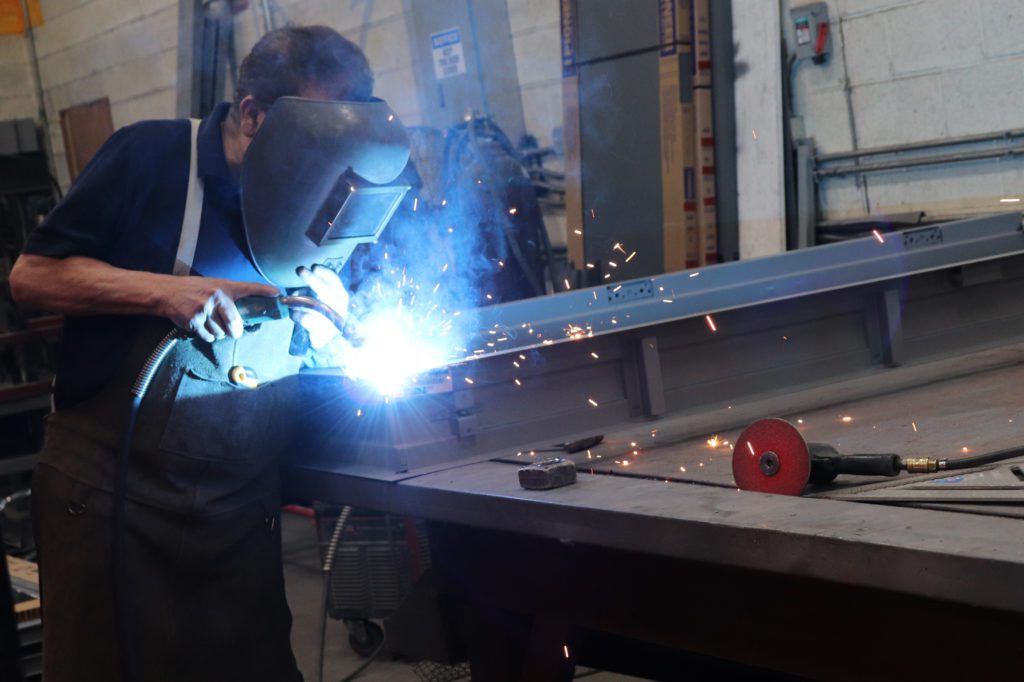
Hollow metal doors are necessary for nearly every commercial building project, from hospitals to
schools to multi-family sites. Although essential, the ins and outs of hollow metal doors are
something few are familiar. At Unified, we want our customers to have the information they
need to make the best, most knowledgeable decisions for their projects. A key component of
hollow metal doors is that they are built for durability and security purposes. While they are all
made with a similar goal in mind, certain doors might be built specifically to fight the threat of
corrosion, while other doors need to meet the fire rating of a specific site. Every door built must
comply with the mandated requirements of the International Building, International Fire Code, as
well as NFPA 80.
Unified manufactures and distributes fire-rated hollow metal doors. Hollow metal doors are made of steel, a notoriously strong material that’s perfectly fit for the job. These doors can last more than 30 years when maintained and installed correctly. There are various techniques for constructing hollow metal doors, and Unified offers a myriad of options depending on what a project requires. Below are a few hollow metal doors and the benefits they offer:
Cold Rolled Primed: for this commonly used method, steel is fed through a rolling machine to
create the door and is primed to avoid rusting, keep water out, and prevent corrosion so the
door does not fail. Once primed, these doors are durable and come out of the mill, ready to be
painted and installed.
Stainless Steel: these doors are generally constructed like standard cold-rolled steel doors with
an added stainless steel finish and other stainless steel elements. Often used in hospitals, food
processing plants, and varying corrosive environments, they boast a sleek, modern appearance
and a variety of stylish finishes.
Galvannealed Steel: this method uses cold-rolled steel that is then treated with a zinc process.
This process entails coating the rolled steel sheet metal with zinc and then heating it in an
annealing oven, allowing the zinc to integrate into the steel. Galvanneal is a rust inhibitor that
leaves a smooth-to-the-touch finish and boasts microscopic keying that allows for excellent
paint adhesion. Additionally, galvannealed steel doors have a live finish meaning they will self-
heal when they endure minor scratches and imperfections.
Inside the sheets of steel, each door has a core that can be constructed from various materials. Common door core materials include:
There are many instances where specific performance requirements make specialty hollow metal doors necessary to achieve the required application. Some of these are:
Acoustic (STC) – Sound Transmission Control: built to reduce the transmission of sound through the door.
Thermal Break: built to reduce the transmission of heat or cold through the door.
Lead Lined: built to protect against radiation transmission through the door typically used in x-ray rooms in hospitals and imaging centers.
Blast/Bullet Resistant: built to protect against the blast of explosions or bullet strikes.
Wind Storm Resistant: built to protect against hurricane or tornado threats.
A door is deemed fire-rated if it can self-close, remain positively latched, and withstand the heat from a fire for between 20 minutes and three hours, depending on the requirements of the application. Highly trained Unified Door and Hardware Group employees can assist with deciphering the complexities of all your varying building codes and read contract documents to ensure that your assemblies come out to the job site with the appropriate fire-rated requirements.
If a door is constructed as fire-rated, the exact materials used to build it are recorded, and the door is sent to a lab where it will undergo a testing process. In the lab, each door is installed into a testing wall, and a controlled fire is started. A timer is set to see how long the door can withstand the burn while remaining closed and latched, keeping smoke out. The time the door can resist the fire indicates its earned burn rating. According to most building specifications, the burn rating of the door must be 3/4 the burn rating of the walls. For example, a wall with a two-hour burn rating would require a hollow metal door with a 90-minute burn rating. As we manufacture and distribute our doors, Unified employees are well-versed in recommending and acquiring the right hollow metal doors for every one of your jobs, whether it be from one of our recommended vendors or one of our doors made in-house.
As a leading manufacturer and distributor of hollow metal, we know the intricacies of hollow metal doors. Our large variety of product offerings within the subject and our knowledge gained from manufacturing hollow metal doors in-house equips us to provide you with best-in-class advice so you can acquire the doors most optimal for the job at competitive prices. We are so confident in our doors and frames that we offer a 10-year warranty. As always, you can count on our expertise to guide you efficiently and attentively through the process to keep you within code and budgetary limitations as we honor your stylistic, specific, and financial needs.